- Navigating the Depths: A Dive into Dredge Pipes
- Understanding Dredge Pipes
- Components and Design
- Materials Used in Dredge Pipes
- Understanding Dimension Ratio in Dredge Pipes
- HDPE DR11 Pipe: Advantages and Applications
- Considerations When Selecting Dredge Pipes for a Project
- Best Practices for Installation and Maintenance
- Conclusion
Navigating the Depths: A Dive into Dredge Pipes
These pipes are often integrated into larger pipelines designed for moving sediment, slurry, and other materials in waterway projects.
Dealing with challenging environmental and operational conditions is a key aspect of dredge pipe system design and use.
Understanding Dredge Pipes
Definition and Function
Dredge pipes are specialized pipes that move sediment, sand, gravel, and sometimes even debris lifted from the seabed or riverbeds to designated locations. This process is crucial for deepening water channels, preventing sedimentation in ports and harbors, and even for land reclamation projects. The primary purpose of dredge pipes is to ensure a continuous flow of dredged material away from high-traffic or environmentally sensitive areas to appropriate disposal or treatment sites.
Types of Dredge Pipes
Dredge pipes are typically categorized based on their placement and specific function within the dredging equipment:
- Floating Dredge Pipes: These pipes float on the water’s surface and are used mainly in transporting dredged materials from the cutter head (the part of the dredge that initially breaks up the sediment) to the shore. They are equipped with floats or buoys to keep them on the surface and are crucial for dredging operations in large water bodies
- Submerged Dredge Pipes: These are used beneath the water surface, often attached to the trailing suction hopper or other suction dredges. They are designed to transport sediment submerged efficiently, minimizing water traffic and surface activity disruption.
- Land-Based Dredge Pipes: After the dredged material reaches the shore through floating pipes, land-based pipes transport it further inland for disposal or processing. These pipes are typically made of more robust materials to withstand rough terrain and longer distances. In addition to pipes, specialized hoses are also used in dredging operations, particularly for connecting sections or accommodating movement between floating and land-based systems.
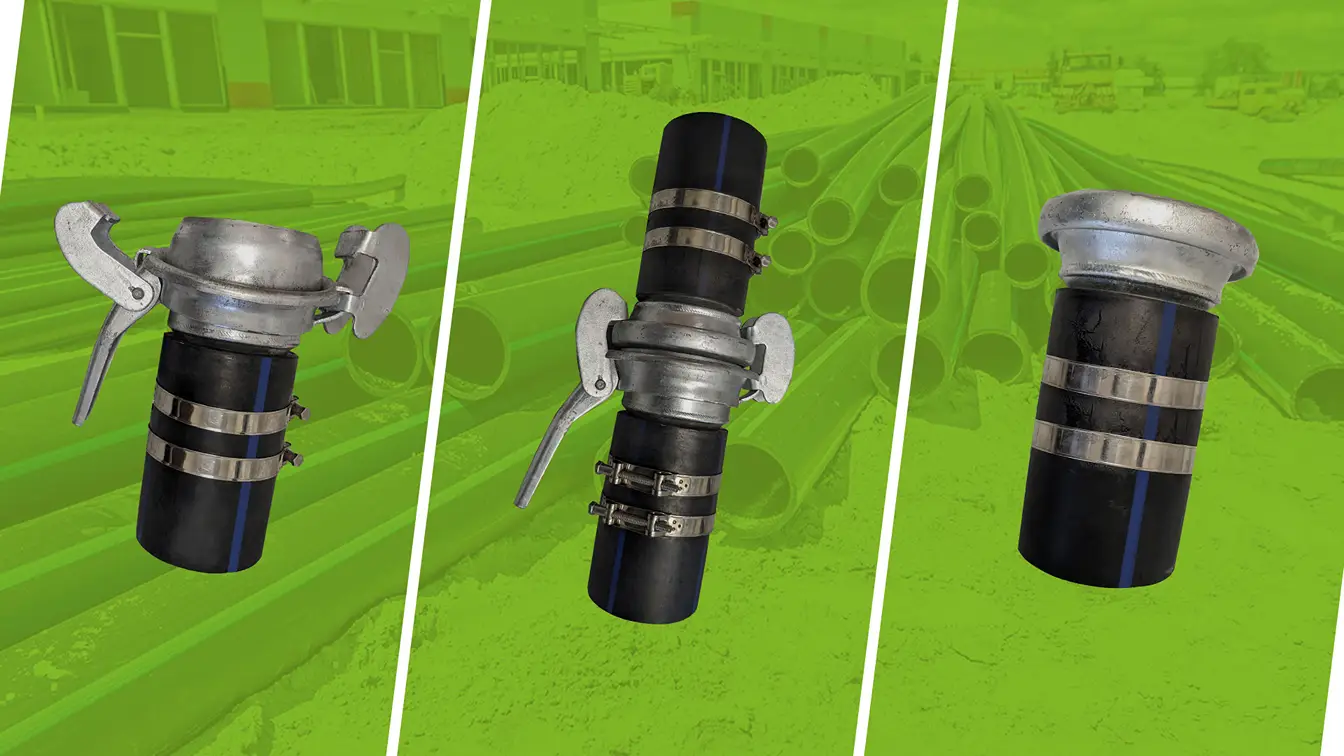
Components and Design
Exploring the Anatomy of a Dredge Pipe
A typical dredge pipe system consists of several key components:
- Suction Head: This is the starting point of the dredging process, where the sediment is initially vacuumed up from the ocean or riverbed. The design of the suction head is critical as it determines the type of material the dredge can handle, from fine sand to large rocks.
- Pipeline: The main body of the dredge pipe, this component is responsible for transporting dredged materials. The outer layers of dredge pipes are specifically engineered to resist external damage from environmental wear, erosion, and impacts, ensuring durability in harsh conditions. Impact resistance is a key feature of these pipelines, providing long-term performance and reliability in challenging marine environments. Depending on the scale of the project, it can be hundreds or even thousands of meters long.
- Discharge Point: This is where the dredged material is expelled. The design of the discharge point depends on the disposal method—whether the material is being pumped ashore for land reclamation, piled back into the water for habitat restoration, or treated for contaminants.
Factors Influencing Design
Several factors influence the design and selection of dredge pipes:
- Material: Dredge pipes are typically made from wear-resistant materials such as HDPE (high-density polyethylene), steel, or specialized rubber composites to handle abrasive materials and prevent leakage. Selecting materials with high durability is crucial for long-term performance in demanding slurry transport conditions.
- Diameter and Length: The diameter and length of the pipes are selected based on the volume of material to be transported and the distance it must travel. Larger diameters are used for heavy-duty operations to minimize clogging and ensure efficient material flow.
- Environmental and Operational Conditions: The environmental conditions (e.g., saltwater corrosion, temperature extremes) and operational considerations (e.g., the type of terrain and the presence of obstacles) also significantly affect the choice of dredge pipe materials and designs. Dredge pipes must be designed to withstand harsh conditions such as strong currents, abrasive materials, and extreme weather.
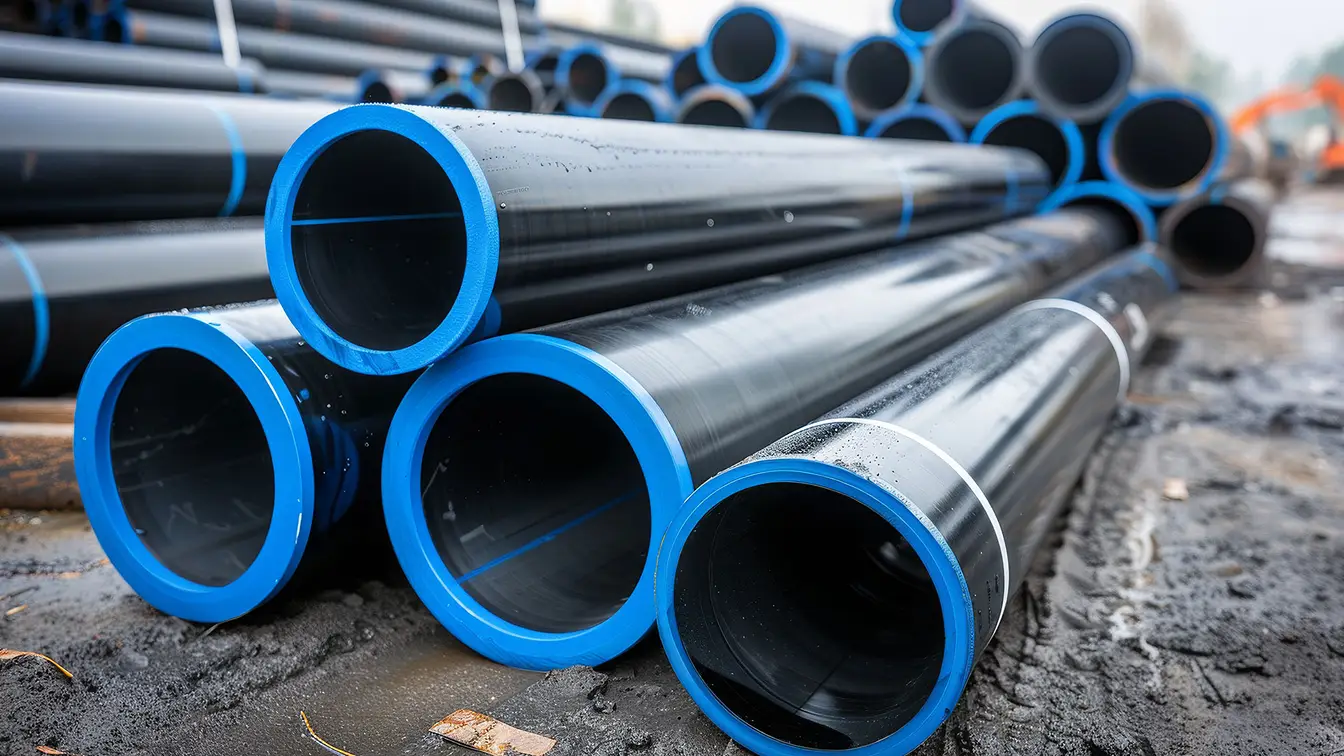
Materials Used in Dredge Pipes
The material choice for dredge pipes is critical, as it directly influences their durability, efficiency, and suitability for different environmental conditions and sediment types. Materials are selected for their ability to withstand erosion caused by abrasive dredging mediums and environmental factors such as wind, waves, and seawater. The most commonly used materials are:
- High-Density Polyethylene (HDPE): HDPE is popular due to its flexibility, resistance to wear and corrosion, and relatively lightweight. It is often used in floating pipes where ease of handling and resistance to environmental factors, including damage from waves and other dynamic water forces, are priorities
- Steel: Steel dredge pipes are valued for their strength and durability. They are typically used in scenarios requiring high-pressure resistance and where abrasive materials are involved.
- Rubber-Lined Steel: Combining steel’s strength with rubber’s abrasion resistance, these pipes are used in applications involving highly abrasive materials that might otherwise wear down steel alone, providing additional protection against erosion.
- Polyurethane and Other Polymers: These materials are sometimes used for specific parts of the dredge pipe system, such as the suction head, due to their abrasion resistance and flexibility.
- Composite Materials: Advances in material science have led to the development of composite materials that offer enhanced durability, flexibility, and resistance to various chemical and physical abrasions, including erosion from waves and harsh dredging environments.
Advantages of HDPE Pipe Over Other Materials
HDPE pipe offers several distinct advantages over other materials used in dredge piping, which make them particularly suitable for a variety of dredging operations:
- Corrosion Resistance: HDPE is inherently resistant to corrosion by both saltwater and many chemical contaminants that can be present in marine and riverbed environments. This property significantly extends the lifespan of dredge pipes made from HDPE, reducing the need for frequent replacements.
- Flexibility and Ease of Installation: Unlike rigid materials such as steel, HDPE offers flexibility, particularly beneficial in dynamic water environments. This flexibility allows the pipes to adapt to changes in terrain and water currents, reducing the risk of pipe damage or breakage. Additionally, HDPE pipes are lighter than metal pipes, simplifying transportation and installation and reducing overall project costs. The buoyancy of HDPE pipes further simplifies installation in marine environments, making them ideal for floating applications.
- Wear Resistance: HDPE’s surface properties reduce wear from abrasive materials like sand, silt, and small rocks. This characteristic is crucial in dredging, where the internal flow of abrasive materials can quickly degrade lesser materials.
- Cost-Effectiveness: Although the initial investment in HDPE pipe may be higher than some alternatives, its durability and low maintenance requirements make it more cost-effective over the long term. It does not require cathodic protection and has fewer issues with buildup and clogging, further reducing maintenance costs. The high durability of HDPE pipes results in fewer repairs and reduced maintenance costs over the lifespan of the system.
- Environmental Impact: HDPE is a non-toxic material, a significant advantage in projects where ecological impact is a concern. It does not leach harmful chemicals into the water and can be recycled at the end of its life cycle, enhancing the environmental sustainability of projects using HDPE dredge pipes.
- Seamless Joints: HDPE pipe can be fused to create seamless joints, making the pipeline leak-proof. Fusion techniques eliminate the need for onsite welds, further enhancing the integrity of the pipe connections. This feature is essential in dredging operations to prevent sediment loss in transit, which can be crucial for environmental and operational reasons.
These advantages make HDPE an increasingly preferred material in many dredging operations, mainly where cost, durability, and environmental impact are significant concerns.
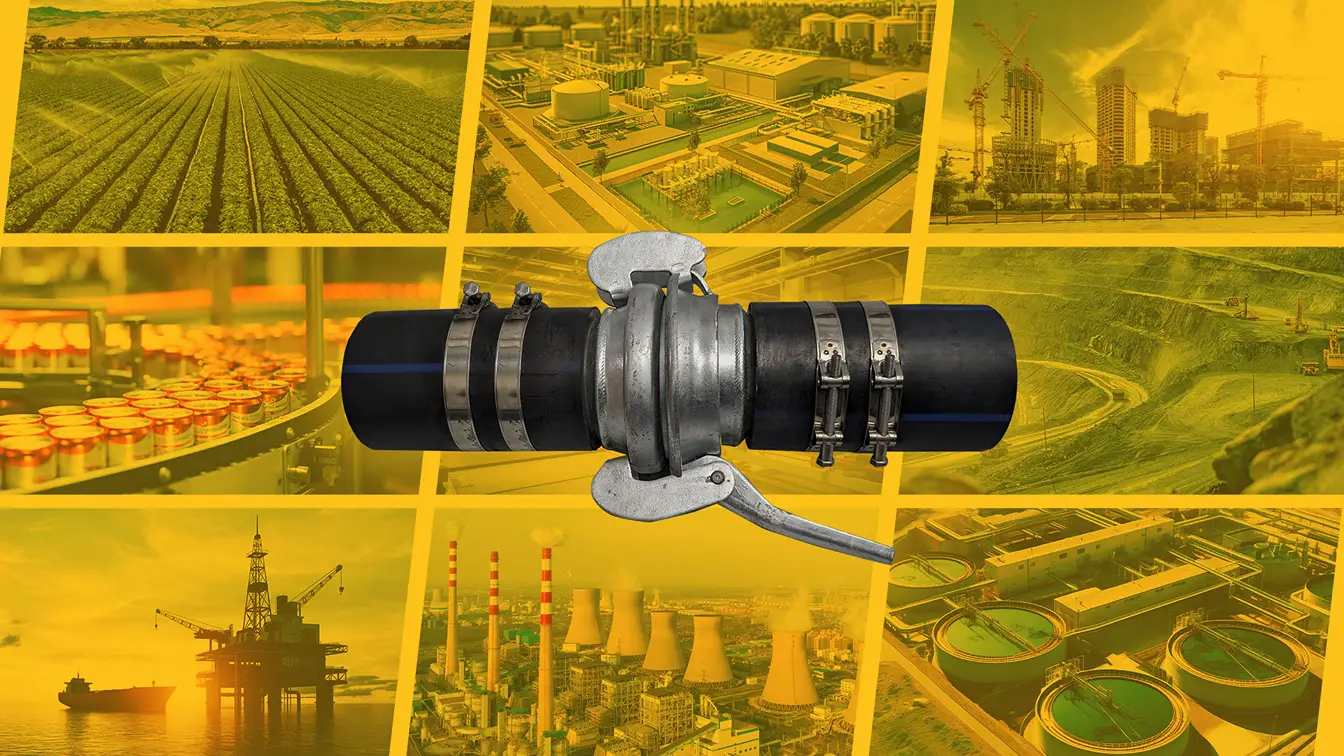
Understanding Dimension Ratio in Dredge Pipes
The Dimension Ratio (DR) is a crucial factor in the design and selection of dredge pipes, particularly when considering the pressure handling capabilities and the thickness of the pipe wall. The DR is the ratio of the pipe’s outside diameter to its minimum wall thickness. Calculating the DR helps determine the pipe specifications needed to handle the pressures during dredging operations effectively.
Importance of Dimension Ratio
>The Dimension Ratio directly influences the strength and flexibility of the pipe. A lower DR indicates a thicker wall relative to the pipe’s diameter, providing more excellent resistance to internal pressures and external forces. Conversely, a higher DR signifies a thinner wall, which might suit applications with lower pressure and less abrasive materials.
How Dimension Ratio Affects Dredge Pipe Performance
- Pressure Management: The primary function of the DR is to ensure that the pipe can withstand the operational pressures it will encounter. In dredging, where different materials and depths create varying pressure environments, selecting a pipe with an appropriate DR is essential for safe and efficient operations.
- Pipe Durability: Thicker walls (lower DR) resist punctures and physical damage better than thinner walls. This is particularly important in environments with rough terrain or when dredging near hard or abrasive materials.
- Flexibility: Pipes with a higher DR (thinner walls) are more flexible, which can be advantageous in applications requiring the pipe to navigate challenging or variable underwater landscapes.
Typical Applications Based on DR Values
- High DR Pipes: These are typically used in low-pressure applications or where the water depth is shallow. Their higher flexibility makes them ideal for floating dredge systems where maneuverability and adaptability to surface conditions are key.
- Low DR Pipes: Used in high-pressure scenarios, such as deep-water dredging or when pumping highly abrasive materials. The thicker walls a lower DR provides can handle the increased mechanical stress.
By understanding and selecting the correct Dimension Ratio, engineers and project managers can ensure that the dredge pipes are cost-effective and tailored to their dredging projects’ specific requirements and challenges. This tailored approach enhances the operational efficiency and longevity of the dredging equipment.
HDPE DR11 Pipe: Advantages and Applications
HDPE DR11 pipe is a specific category of high-density polyethylene pipe with a Dimension Ratio (DR) of 11. This ratio indicates that the outside diameter of the pipe is eleven times greater than its wall thickness. HDPE DR11 pipes are often selected for their cost efficiency, as they help optimize operational costs and enhance long-term return on investment. These pipes balance strength and flexibility, making them well-suited for various dredging operations.
Advantages of HDPE DR11 Pipe
- Optimal Pressure Resistance: With a Dimension Ratio of 11, these pipes offer excellent resistance to internal pressures without being excessively heavy or rigid. This makes them ideal for medium to high-pressure applications in dredging.
- Durability: The wall thickness of DR11 pipes provides a robust barrier against physical damage and wear from abrasive materials. This robust construction not only ensures a long operational lifespan but also significantly reduces the frequency and need for repair in demanding dredging environments, minimizing the need for frequent replacements and repairs.
- Flexibility: Despite their thicker walls than higher DR pipes, DR11 pipes offer significant flexibility. This flexibility is crucial for handling and installation in challenging dredging environments where the pipes may need to bend around obstacles or conform to uneven terrains.
- Leak Resistance: The fusion joints of HDPE pipe create a seamless and airtight seal, making the DR11 pipes virtually leak-proof. This feature is essential in environmental dredging, where preventing spillage of contaminated materials is critical.
- Cost-Effectiveness: HDPE DR11 pipe provides a good balance between cost and performance. Their durability and low maintenance requirements make them a financially viable option for long-term dredging projects.
Applications of HDPE DR11 Pipe
- Marine Dredging: HDPE DR11 pipe is extensively used in marine dredging operations where varying water pressures and sediment types demand a pipe that can handle medium to high pressures while offering substantial durability.
- River and Canal Dredging: These pipes are also ideal for dredging rivers and canals where a significant amount of sediment transport might be involved. Their resistance to wear and abrasion helps maintain efficiency in sediment-laden waters.
- Environmental Dredging: The integrity of the dredge pipe system is paramount in projects aimed at removing contaminated sediments from water bodies. HDPE DR11 pipe is often selected for its reliable performance and leak-proof nature, minimizing the risk of spreading contaminants.
- Land Reclamation: For land reclamation projects that involve long distances and varying pressures, the DR11 pipe provides the necessary resilience and flexibility, ensuring that materials are transported efficiently from dredging sites to reclamation areas.
The availability of HDPE DR11 pipes can vary by location, such as Texas, California, Florida, Montana, Alabama, and New Jersey. Specifying your geographic area can help identify nearby suppliers and streamline shipping considerations.
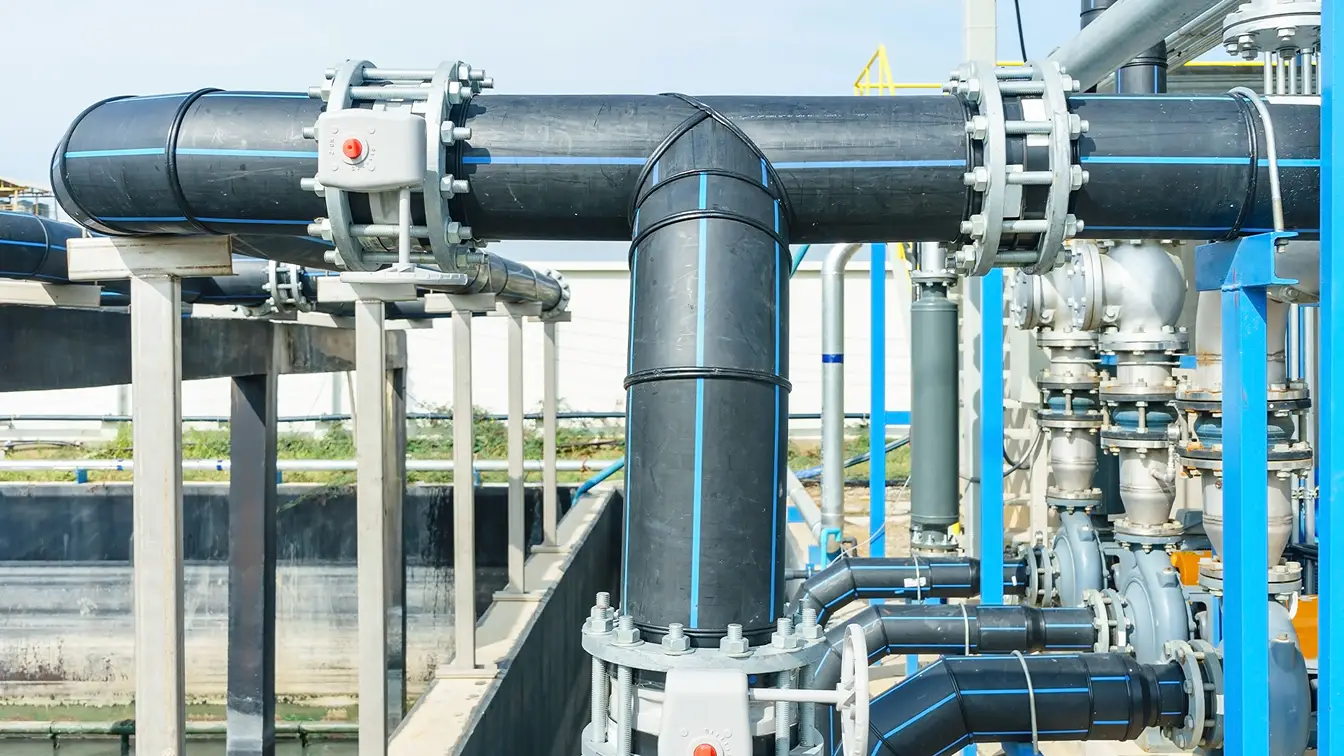
Considerations When Selecting Dredge Pipes for a Project
Choosing suitable dredge pipes is critical to the success of any dredging project. Several factors must be considered to select the most appropriate pipes that deliver performance, durability, and cost-effectiveness. Here are the key considerations:
- Type of Material to be Dredged
The nature of the material to be dredged (such as mud, sand, gravel, or rocks) significantly influences the choice of dredge pipes. Abrasive materials require pipes made from more durable materials that resist wear and tear, while lighter materials might allow for the use of pipes with higher Dimension Ratios (DR).
- Project Environment
The environmental conditions where the dredging will take place affect pipe selection:
- Saltwater vs. Freshwater: Saltwater environments necessitate corrosion-resistant materials like HDPE or coated steel to withstand the corrosive effects.
- Temperature Extremes: Extreme cold or heat can affect the performance of dredge pipes, necessitating materials adapted to such conditions.
- Depth and Distance of Dredging
The depth at which dredging is conducted and the distance over which the material must be transported play crucial roles in determining the pipe’s diameter and wall thickness. Deeper dredging operations with higher ambient pressures require pipes with lower DR values for increased strength and durability.
- Installation and Handling Requirements
Ease of installation and the handling characteristics of the pipes are essential, especially in challenging terrains or remote locations. Lighter and more flexible pipes, such as HDPE, might be favored for their ease of deployment and handling.
- Pressure Requirements
To select a pipe that can handle the expected load without failure, the operating pressure within the dredge pipeline must be understood. This includes both the static pressure due to the depth of the operation and the dynamic pressure from pumping speeds.
- Budget Constraints
Cost is always a consideration in project planning. The pipe’s initial cost, long-term maintenance, and potential replacement costs should be evaluated. Pipes are often available for sale in a variety of sizes and conditions, so the price per unit should be considered when evaluating suppliers. While more durable materials have a higher upfront cost, their longer lifespan and reduced maintenance needs could provide savings over time.
- Environmental Impact and Regulations
When selecting dredge pipes, the environmental impact of dredging activities and the associated regulatory requirements must be considered. Non-toxic and recyclable materials like HDPE are often preferred to minimize environmental footprints.
- Joint Integrity and Leak Prevention
Ensuring that joints between pipe sections are secure and leak-proof is paramount, especially in environmental dredging. Techniques like heat fusion for HDPE pipes, which create seamless connections, should be considered to prevent leaks of potentially contaminated materials.
- Supplier Reliability and Pipe Certifications
Selecting pipes from a reputable supplier with proven quality and support is crucial. Certifications and compliance with industry standards (such as ISO or ASTM) assure pipe quality and performance.
Best Practices for Installation and Maintenance
Proper installation and maintenance of HDPE dredge pipes are essential to ensure reliable performance and maximize the structural integrity and long service life of your dredging system. In dredging operations, HDPE pipe is routinely exposed to high pressure, harsh environments, and abrasive materials, making it critical to follow industry best practices from the outset.
Conclusion
Dredge pipes are foundational to successful dredging operations, playing a pivotal role in maintaining and enhancing our waterways and maritime infrastructure. As we’ve explored, these pipes come in various forms, each tailored to meet specific environmental conditions and operational needs. From floating pipes that manage dredged materials on the water’s surface to robust land-based pipes designed for long-distance transport, the technology behind these systems is both complex and fascinating. Selecting the suitable dredge pipe involves thoroughly understanding the project’s requirements, including the type of material to be dredged, the environmental conditions, and the overall project goals.
High-density polyethylene (HDPE) pipes, especially those with a Dimension Ratio of 11 (DR11), have been highlighted for their balance of flexibility, durability, and cost-effectiveness, making them a preferred choice in many scenarios. The importance of considering factors such as material properties, dimension ratio, and pipe integrity cannot be overstated. These considerations ensure not only the efficiency and effectiveness of the dredging operation but also its environmental compliance and sustainability. As dredging continues to play a crucial role in global development and environmental conservation, the evolution of dredge pipe technology will remain a key area of focus. By leveraging advanced materials and engineering designs, we can continue to improve the performance and sustainability of dredging operations, ensuring they meet the demands of modern infrastructure and environmental stewardship.
For consultations, quotes, or more information about our dredge pipe solutions, please contact us today.


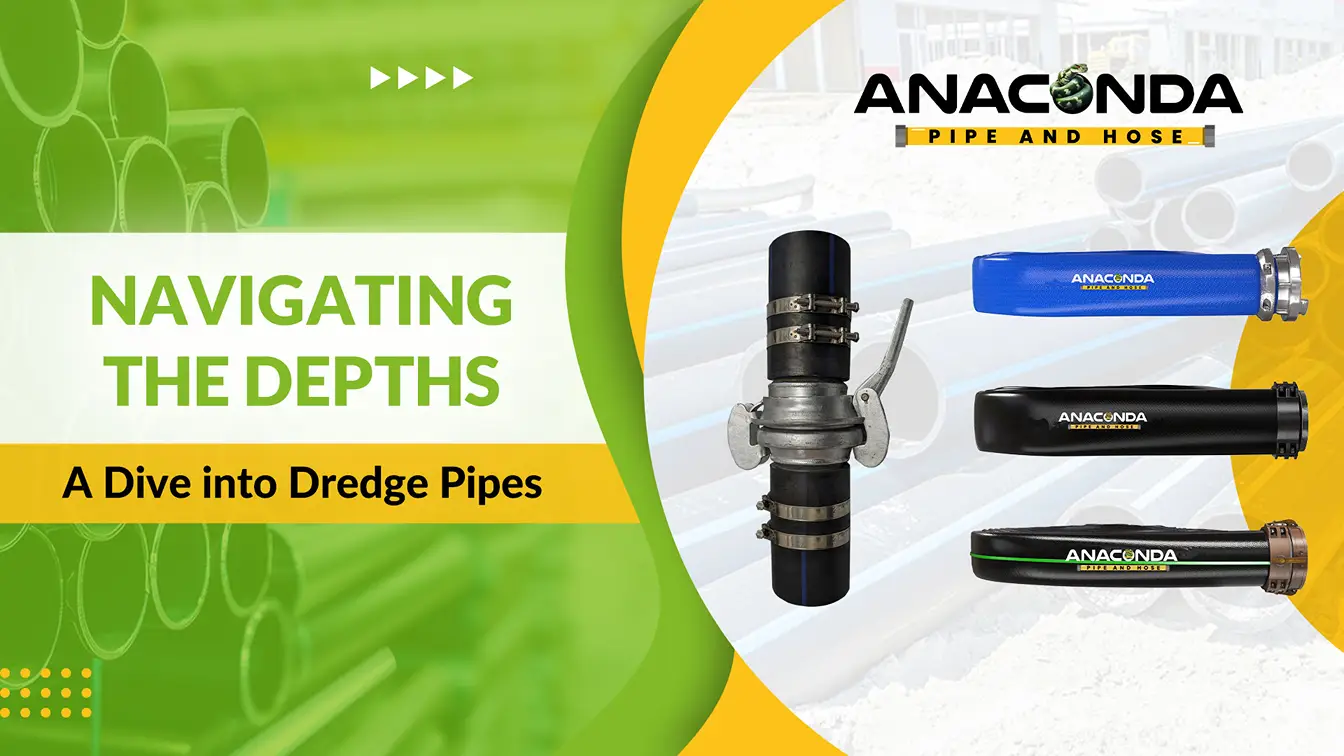
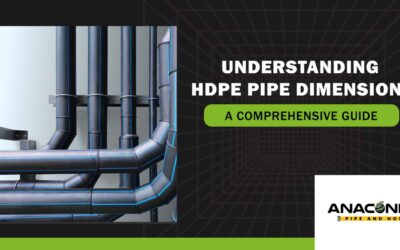
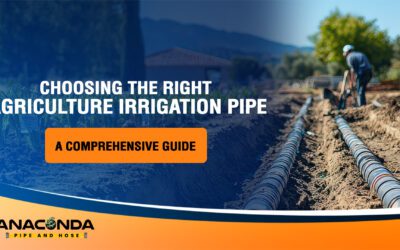
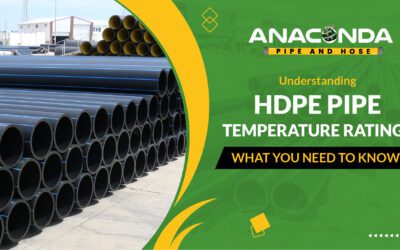
0 Comments